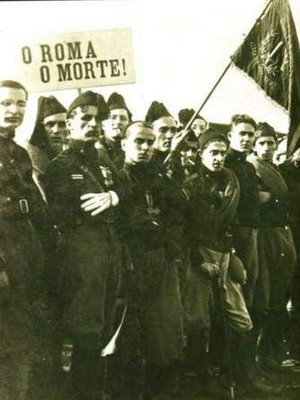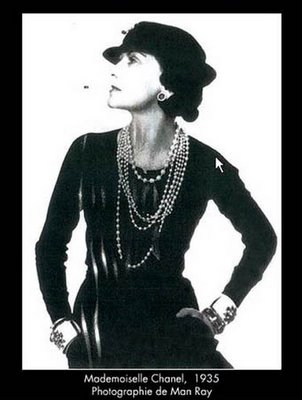
If there was one thing the Nazis understood above all else, it was the power of image. With their flags, their rallies and their militaristic uniforms, they whipped the German people into a frenzy of hope and expectation. The uniform itself was designed to appear noble and powerful; it went on to become one of the single most influential dress codes of the 20th century. By adopting the military look and promoting an overtly masculine presence, the Nazis appealed to the German desire for security in a time of economic hardship. They created a uniform for everyone, from students to nurses to the labor corps, and in the process they made everyone an extension of the Reich.

In Italy, meanwhile, the fascists were the first to utilise the devastating cool of a sheer black shirt and tie. Black has always represented the point where civilisation and barbarity meet, somehow mixing darkness with sophistication. But in the hands of Mussolini's violent fascists its dangerous allure was exploited to the max. The paramilitary Squadristi wore black turtle-neck sweaters, black shirts and ties and a black fez with tassles: the aim was to intimidate and the effect was achieved through fashion.

Given their penchant for style, is it any wonder that the Fascists found sympathetic bedfellows in the world of fashion? The values of fashion, like Fascism, are skin-deep, ruled by image, sensation and seduction. Designers, like dictators, manipulate the power of image to draw gasps and sighs from their captured audiences; they conjure a whole ideology in a single aesthetic instance. Coco Chanel was one leading lumière of the fashion world who couldn't resist the 'Nazi chic' (she even dated a Nazi officer). Hugo Boss was another. Before and during World War II, he designed the uniforms of Hitler's elite killing troop, the SS, and manufactured them with slave labour. (The factory was later labelled an "opportunist of the Third Reich" and fined 80,000 Marks.) And finally, it comes as no surprise that some of the last century's biggest fashion spenders have been the wives of brutal dictators. Think Imelda Marcos and Eva Peron.
What this says about fashion is unclear, other than the fact that our tendency to be seduced by appearance becomes dangerous when exploited by cunning politicians. One of the benefits of consumer capitalism is that its proliferation of different styles prevents society from becoming monomaniacal, thus neutralising the inherent power of fashion. Fashion, in fact, becomes a commodity rather than a weapon - which, although in some ways sad, is clearly a necessary precaution. When George Bush dons a military uniform whilst engaging in political affairs (and to be frank, that image isn't quite as absurd as it should be) - only then do we need to worry.
This blog entry was made possible by A Suit That Fits.
No comments:
Post a Comment